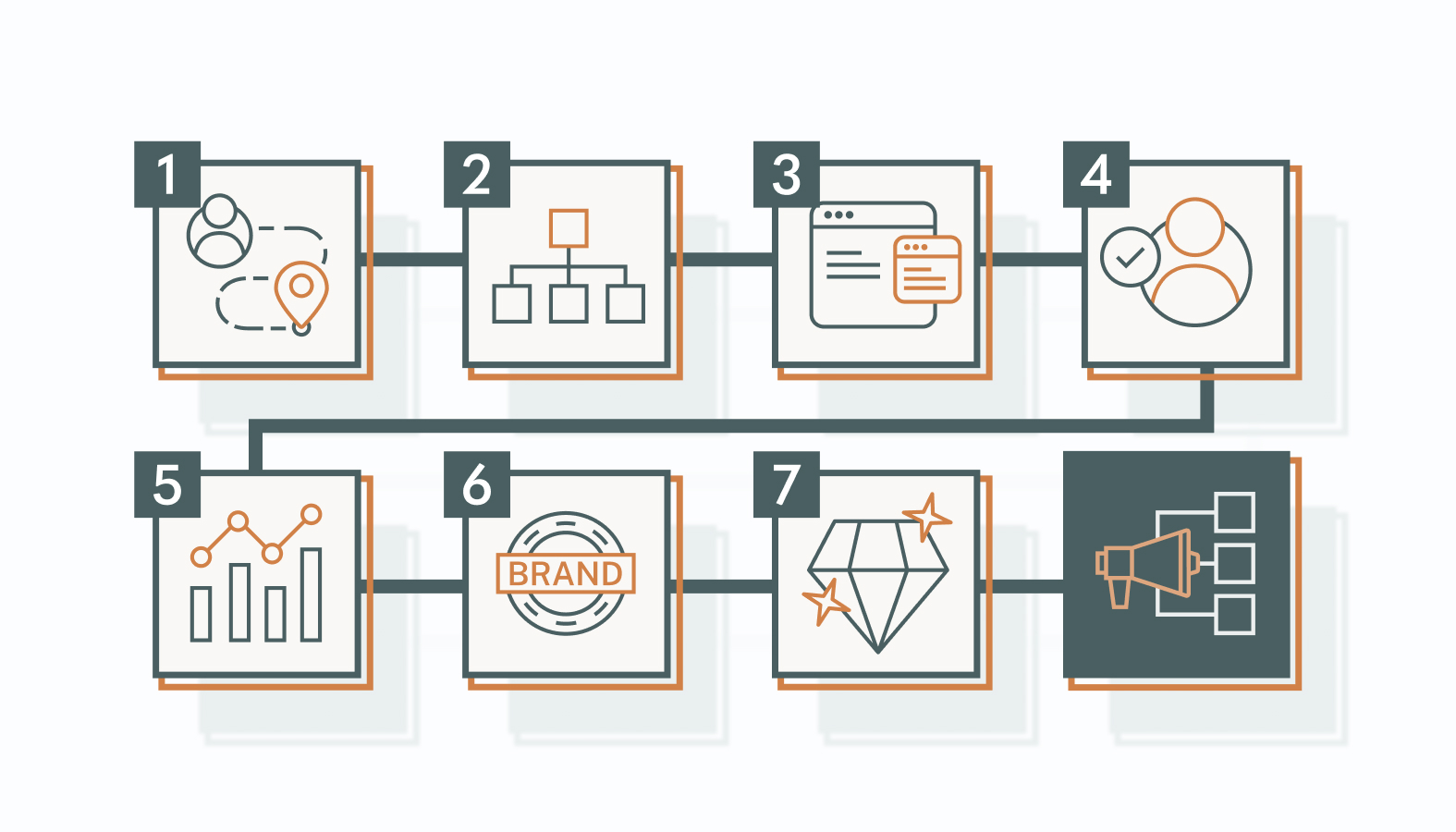Businesses today must navigate a complex web of customer touchpoints to succeed.
An omnichannel marketing strategy bridges the gap between these various interactions and creates a seamless and cohesive experience. This integrated approach not only improves customer satisfaction but also drives engagement and boosts revenue.
In this article, we’ll explore omnichannel marketing and highlight its essential role in modern business. We’ll also provide real-world examples that showcase its impact. This guide will equip you with the knowledge to enhance customer experience and refine your marketing for success.
Introduction to Omnichannel Marketing Strategy
Omnichannel marketing is a sophisticated strategy that caters to the changing needs of modern consumers. It involves creating a seamless customer experience across various platforms, ensuring interactions with a brand are consistent, whether online, in-store, or via mobile apps.
As customers expect personalized and smooth interactions, an omnichannel marketing strategy is essential. It enables businesses to engage with their audience in meaningful ways across different channels. This strategy enhances customer satisfaction and boosts loyalty through a consistent brand experience.
Why Choose an Omnichannel Approach?
An omnichannel strategy offers several advantages for businesses, from improving customer experiences to driving sales growth. Let’s explore each benefit.
Improved Customer Experience
An omnichannel strategy improves the customer journey by creating a smooth and personalized experience across all channels. This means that whether customers are shopping online, in-store, or via a mobile app, their interactions with the brand feel consistent and tailored to their needs.
For example, Starbucks has successfully implemented an omnichannel strategy with its mobile app. The app allows customers to order ahead, collect rewards, and pay, whether they’re in-store or on-the-go. This integration has led to higher customer satisfaction and loyalty.
Boost Customer Engagement
Meeting customers where they are—whether on social media, email, or physical stores—can dramatically increase their interaction and involvement with your brand.
An omnichannel approach ensures your brand is always in the right place at the right time, building deeper connections with your audience.
Disney integrates theme park experiences with its mobile apps and online platforms. This strategy has resulted in better user experiences and increased time spent interacting with the brand.
Gain Comprehensive Customer Insights
Omnichannel marketing allows businesses to gather and analyze data from various channels, giving a complete view of customer behavior. This insight helps them better understand their audience’s preferences and adjust their marketing strategies accordingly.
For instance, retailers like Nordstrom use data from both online and in-store purchases to personalize recommendations, which enhances the shopping experience and boosts sales.
Ensure Consistent Brand Messaging
Consistent messaging across all platforms helps build trust and reinforces brand identity. It ensures customers receive the same brand story and values, regardless of the channel they engage with.
Tools like brand guidelines and centralized content management systems can help achieve this consistency. Brands like Apple excel at maintaining a consistent voice and aesthetic. Its marketing messages are instantly recognizable across all media.
Increased Sales and Revenue
A well-executed omnichannel strategy reduces barriers to purchase, leading to higher conversion rates and sales. By simplifying the buying process and connecting channels, businesses can boost their revenue.
For example, Nike’s strategic use of digital platforms alongside physical retail stores has resulted in a cohesive shopping experience that drives in-store and online sales. This integration has been a key factor in its substantial revenue growth over recent years.
Building Your Omnichannel Marketing Strategy
Building an effective omnichannel marketing strategy requires careful planning and integration across all touchpoints. Here are some steps to help you create a smooth and engaging customer experience.
Map Out the Customer Journey
Understanding each phase of the customer journey—from awareness to post-purchase—is important in creating an effective omnichannel strategy. By mapping out this journey, you can identify touchpoints and areas for improvement.
Customer journey maps are a valuable tool in this process. They show customers’ experiences and interactions with your brand and highlight opportunities to boost engagement and satisfaction. These insights help develop strategies that support customers at every stage.
Choose the Optimal Channels
Choosing the right channels to engage your audience is paramount. The effectiveness of each channel depends on where your target audience spends their time and how they prefer to interact with brands.
To evaluate and prioritize channels, consider your audience demographics, channel performance metrics, and industry trends. This analysis helps optimize your reach and impact and ensures your marketing efforts align with customer preferences.
Integrate Platforms Seamlessly
Different platforms must work together for a smooth, unified customer experience. Integration ensures consistent interactions and data flow across all channels.
To achieve this, use compatible technologies, APIs, and centralized data management solutions to connect platforms and provide a complete view of customer interactions and needs.
Personalize the Customer Experience
Personalize interactions at each touchpoint using customer data to offer relevant content and deals and make every interaction more relevant and engaging.
Adaptability is key; personalization efforts must be scalable and evolve with customer preferences. Implement AI-driven analytics and dynamic content strategies to keep personalization effective and responsive.
Leverage Data for Strategic Decisions
Collecting and analyzing customer data across various channels helps businesses make better decisions, refine marketing strategies, and enhance customer engagement.
Effective data-driven tactics include A/B testing to optimize content and predictive analytics to anticipate customer needs. These approaches help tailor marketing efforts, improving overall performance and ROI.
Maintain Uniform Brand Communication
A consistent brand message across all platforms builds trust and reinforces brand identity. It ensures customers receive a cohesive story, regardless of where they interact with your brand.
Tools such as brand guidelines and centralized content management systems can help maintain consistency. These resources ensure all marketing materials adhere to the brand’s voice and visual identity, building recognition and loyalty.
Assess and Enhance Your Approach
Regularly evaluate your omnichannel strategy to identify successes and areas for improvement. Use KPIs and feedback loops to gather insights and adjust your approach as needed. This proactive stance keeps your omnichannel strategy aligned with business goals and customer needs.
Creating Synergy Across Marketing Channels
Creating synergy across marketing channels is essential for delivering a seamless and integrated customer experience. By aligning digital and physical touchpoints, using technology, and maintaining consistency, businesses can enhance customer satisfaction and drive loyalty.
Aligning Digital and Physical Touchpoints
Aligning digital and physical interactions is crucial for a successful omnichannel strategy. Strategies such as using in-store technology to improve online experiences can create a more seamless customer journey.
For example, retailers like Walmart use in-store kiosks to let customers browse and order online products while shopping physically, merging the convenience of digital with the immediacy of in-store shopping.
This creates a flexible shopping experience for customers and boosts engagement and satisfaction for businesses.
Leveraging Technology for Cohesive Integration
Technology plays an important role in connecting various marketing channels. CRM systems, marketing automation tools, and unified commerce platforms ensure smooth integration. Recent advancements, such as AI-driven analytics and IoT devices, provide real-time data and personalized customer interactions.
These technologies support a strong omnichannel strategy, allowing businesses to engage customers more effectively.
Streamlining Customer Data Across Platforms
Consolidating customer data from different channels creates a comprehensive view of their journey. It helps businesses understand customer behavior across touchpoints and make smart decisions.
Use data warehousing solutions and maintain data consistency across platforms to streamline this process. These methods enable businesses to access accurate, real-time insights, which are important for refining marketing strategies and enhancing customer experiences.
Ensuring Consistent Brand Messaging Across Channels
Maintaining a uniform brand voice and message across all marketing channels builds trust and recognition.
To achieve this, develop detailed brand guidelines and use content management systems that align all marketing materials with the brand’s identity. These tools ensure every piece of communication reflects the brand’s core values and messaging, regardless of the channel.
Facilitating a Unified Customer Experience
A seamless and unified customer experience boosts customer satisfaction and loyalty. Align team efforts across departments and use customer feedback to continuously refine their experience.
This approach not only enhances customer satisfaction but also drives long-term loyalty by ensuring every interaction feels personalized and coherent.
Real-World Examples of Omnichannel Marketing Success
Real-world examples of omnichannel marketing success show the practical application and impact of this strategy. Let’s explore some case studies.
AGY Client Success Story
Poolie, a local pool services and repair business, faced the challenge of scaling to over $100M in revenue within four years following private equity funding. Despite a strong local presence, its brand and marketing operations needed a significant overhaul, especially with its busy season.
Poolie chose Agency for our straightforward, data-driven approach. We became candid partners, diving deep into its business to ensure every strategy was rooted in truth.
Our full-funnel transformation included refreshing its brand identity, improving its messaging, and implementing advanced analytics and revenue operations (RevOps) systems to unify and optimize all marketing channels.
The results have been transformative. Poolie has evolved into a data-driven powerhouse poised for sustainable growth. With Agency’s help, it continues to refine strategies, enter new markets, and scale operations effectively to meet its revenue goals.
Sephora’s Integrated Customer Experience
Sephora has mastered the art of integrating online and in-store experiences. With its mobile app, it offers features like virtual try-ons and personalized recommendations, which are seamlessly connected to in-store technology, such as smart mirrors and digital catalogs.
This integration has led to better personalization, allowing customers to have a consistent experience regardless of how they choose to interact with the brand. As a result, Sephora has seen increased customer loyalty and higher sales conversion rates, cementing its position as a leader in the beauty industry.
Nike’s Seamless Shopping Journey
Nike effectively combines digital platforms and retail stores to create a cohesive shopping experience. Its mobile app not only allows customers to browse and purchase products but also offers exclusive content and personalized recommendations based on in-store interactions.
Interactive store features, such as self-service kiosks and digital displays, complement the app’s functionality and ensure the shopping experience is both convenient and engaging. Nike’s omnichannel strategy has increased customer engagement and brand loyalty, improving overall customer convenience and satisfaction.
Disney’s Cross-Platform Engagement
Disney’s omnichannel strategy brilliantly integrates various platforms, including its streaming services, theme parks, and retail outlets, to deliver a unified brand experience. With its Disney+, My Disney Experience app, and in-park technologies, Disney ensures every interaction is interconnected for a better overall customer experience.
This strategy keeps audiences engaged across different touchpoints and helps Disney maintain a strong, loyal customer base that values the brand’s constant innovation and commitment to quality experiences.
Future Trends in Omnichannel Marketing
As marketing evolves, several emerging trends will shape the future of omnichannel strategies. Among them are AI-driven personalization and enhanced data analytics.
AI-Driven Personalization
Artificial intelligence is becoming increasingly instrumental in delivering personalized customer experiences. AI algorithms can analyze vast amounts of data to predict customer preferences and behaviors more accurately, allowing businesses to tailor their offerings and messages to individual needs.
Its impact on future marketing strategies will be profound. Brands will be able to automate and customize interactions at scale and offer personalized recommendations and targeted promotions in real time. This level of personalization will not only improve customer satisfaction but also boost conversions and brand loyalty.
Enhanced Data Analytics
The role of data analytics in omnichannel marketing is expanding, with advancements enabling deeper insights and better decision-making. Modern analytics tools can now integrate data from various sources and provide a comprehensive view of the customer journey across all touchpoints.
These insights will help businesses spot trends, maximize marketing spend, and predict future behaviors with greater accuracy. Companies will be better equipped to refine their strategies to meet customer needs and stay competitive.
Predicting the Impact
AI-driven personalization and enhanced data analytics will make marketing more efficient and effective. Businesses that use these technologies will be able to create more cohesive and engaging customer experiences, ultimately driving growth and increasing market share.
As these trends continue to develop, marketers must invest in technology and skills to harness the full potential of these innovations. The future of omnichannel marketing will feature intelligent, data-driven campaigns that are finely tuned to the nuances of customer journeys, setting the stage for unprecedented levels of engagement and success.
Moving Forward With Omnichannel Marketing
Implementing an omnichannel marketing strategy can transform how your business interacts with customers, making their journey smoother and more engaging. As we’ve explored, the right strategies can greatly improve customer satisfaction and drive business growth.
If you’re curious about how these strategies might work for your business or need advice on refining your approach, we’re here to help. Our team of experts is ready to provide insights and answer any questions you might have. No pressure—just an opportunity to learn more about improving your marketing efforts.
Schedule a candid conversation with one of our experts, and let’s see how omnichannel marketing can benefit your business. We’re excited to chat with you and offer genuine, practical advice tailored to your needs.









